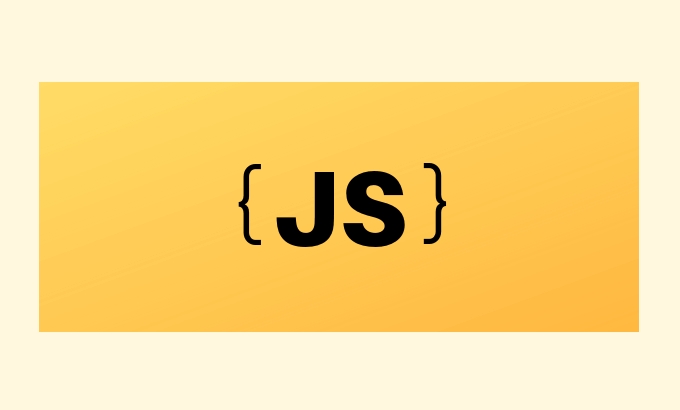Building a JavaScript design system requires starting from actual needs and gradually improving it. 1. Component abstraction should be "enough but not excessive". First, encapsulate common components and basic properties, such as the variable and disabled buttons, and then expand on demand; 2. Style management should be unified and extensible, using CSS-in-JS schemes, topic variables and unified naming specifications, such as BEM or CSS Modules; 3. Documents and examples are key, and use Storybook to provide visual presentation, covering usage, status, props tables and actual scenario examples; 4. The design system requires version control and collaboration mechanism, and ensures continuous maintenance through npm release, PR update process and design tools synchronization.

Designing and building a JavaScript design system is the core of enabling components, styles, and interactive logic to be reused and maintained across multiple projects. It not only writes a set of UI component libraries, but also establishes a unified design language and development specifications. If you are considering building from scratch or optimizing an existing system, the following points are something that deserve attention in actual development.

1. Component abstraction should be "enough but not excessive"
Components are the core of design systems. But many people want to encapsulate all possible variants from the beginning, which leads to complex and difficult to maintain.
suggestion:

- Start with the most commonly used scenarios, such as buttons, input boxes, cards, etc., to ensure that these components are stable and testable.
- Avoid introducing a lot of parameters or abstract logic from the beginning. For example, for a button component, it is enough to first support basic types (primary/secondary), disable status, and click events.
- When there are clear reuse requirements, gradually expand. For example, if you find that multiple projects require a button with a "loading" state, add a
loadingattribute.
For example: a simple button component initially only needs to support
variantanddisabled, and then add icon, loading and other functions.
2. Style management should be unified and extensible
Style is the most likely place where design systems get out of control. Once the CSS written by different projects and different people are mixed, the system will be in chaos.

suggestion:
- Using CSS-in-JS solutions (such as styled-components or Emotion) can more easily bind styles to components and can also be easier to customize themes.
- Create a unified style variable (color, font, spacing, etc.) and place it in a
theme.jsfile to avoid hard coding. - Encapsulate some commonly used style fragments, such as flex layout, responsive breakpoints, etc., to reduce duplicate code.
Key points of style management:
- All components refer to the same topic variable
- Unified style naming specifications, such as BEM or CSS Modules
- Theme can be replaced, convenient for dark mode or multi-brand support
3. Documentation and examples are the key to designing a system “l(fā)ive”
The components are written, but no one knows how to use them. Documentation is not an optional add-on, but a core component of the design system.
suggestion:
- Use tools like Storybook or Docz to provide a visual display page for each component.
- Each component page should contain:
- Basic usage
- Different states (disable, load, error, etc.)
- Configurable props table
- Examples of actual usage scenarios
For example: A document for a form component, in addition to displaying the basic style, also explains how it works with the form verification library.
4. Designing the system requires "version control" and "collaboration mechanism"
Designing a system is not a one-person project, it requires team collaboration and continuous maintenance. Without a good collaboration mechanism, it is easy to become "legacy code that no one cares about".
suggestion:
- Use npm or private package manager to publish components to ensure that the version is controllable.
- Establish an update process, such as component changes require submitting PR and writing changelog.
- Stay synchronized with the design team to ensure that the components are consistent with the design draft (the styles can be synchronized with the Figma plugin).
Basically that's it. Building a JavaScript design system is not something that can be achieved overnight, but as long as you start from actual needs and gradually improve it, you can form a system that can be truly implemented and reused.
The above is the detailed content of Building JavaScript Design Systems. For more information, please follow other related articles on the PHP Chinese website!

Hot AI Tools

Undress AI Tool
Undress images for free

Undresser.AI Undress
AI-powered app for creating realistic nude photos

AI Clothes Remover
Online AI tool for removing clothes from photos.

Clothoff.io
AI clothes remover

Video Face Swap
Swap faces in any video effortlessly with our completely free AI face swap tool!

Hot Article

Hot Tools

Notepad++7.3.1
Easy-to-use and free code editor

SublimeText3 Chinese version
Chinese version, very easy to use

Zend Studio 13.0.1
Powerful PHP integrated development environment

Dreamweaver CS6
Visual web development tools

SublimeText3 Mac version
God-level code editing software (SublimeText3)
 How to make an HTTP request in Node.js?
Jul 13, 2025 am 02:18 AM
How to make an HTTP request in Node.js?
Jul 13, 2025 am 02:18 AM
There are three common ways to initiate HTTP requests in Node.js: use built-in modules, axios, and node-fetch. 1. Use the built-in http/https module without dependencies, which is suitable for basic scenarios, but requires manual processing of data stitching and error monitoring, such as using https.get() to obtain data or send POST requests through .write(); 2.axios is a third-party library based on Promise. It has concise syntax and powerful functions, supports async/await, automatic JSON conversion, interceptor, etc. It is recommended to simplify asynchronous request operations; 3.node-fetch provides a style similar to browser fetch, based on Promise and simple syntax
 JavaScript Data Types: Primitive vs Reference
Jul 13, 2025 am 02:43 AM
JavaScript Data Types: Primitive vs Reference
Jul 13, 2025 am 02:43 AM
JavaScript data types are divided into primitive types and reference types. Primitive types include string, number, boolean, null, undefined, and symbol. The values are immutable and copies are copied when assigning values, so they do not affect each other; reference types such as objects, arrays and functions store memory addresses, and variables pointing to the same object will affect each other. Typeof and instanceof can be used to determine types, but pay attention to the historical issues of typeofnull. Understanding these two types of differences can help write more stable and reliable code.
 React vs Angular vs Vue: which js framework is best?
Jul 05, 2025 am 02:24 AM
React vs Angular vs Vue: which js framework is best?
Jul 05, 2025 am 02:24 AM
Which JavaScript framework is the best choice? The answer is to choose the most suitable one according to your needs. 1.React is flexible and free, suitable for medium and large projects that require high customization and team architecture capabilities; 2. Angular provides complete solutions, suitable for enterprise-level applications and long-term maintenance; 3. Vue is easy to use, suitable for small and medium-sized projects or rapid development. In addition, whether there is an existing technology stack, team size, project life cycle and whether SSR is needed are also important factors in choosing a framework. In short, there is no absolutely the best framework, the best choice is the one that suits your needs.
 JavaScript time object, someone builds an eactexe, faster website on Google Chrome, etc.
Jul 08, 2025 pm 02:27 PM
JavaScript time object, someone builds an eactexe, faster website on Google Chrome, etc.
Jul 08, 2025 pm 02:27 PM
Hello, JavaScript developers! Welcome to this week's JavaScript news! This week we will focus on: Oracle's trademark dispute with Deno, new JavaScript time objects are supported by browsers, Google Chrome updates, and some powerful developer tools. Let's get started! Oracle's trademark dispute with Deno Oracle's attempt to register a "JavaScript" trademark has caused controversy. Ryan Dahl, the creator of Node.js and Deno, has filed a petition to cancel the trademark, and he believes that JavaScript is an open standard and should not be used by Oracle
 Handling Promises: Chaining, Error Handling, and Promise Combinators in JavaScript
Jul 08, 2025 am 02:40 AM
Handling Promises: Chaining, Error Handling, and Promise Combinators in JavaScript
Jul 08, 2025 am 02:40 AM
Promise is the core mechanism for handling asynchronous operations in JavaScript. Understanding chain calls, error handling and combiners is the key to mastering their applications. 1. The chain call returns a new Promise through .then() to realize asynchronous process concatenation. Each .then() receives the previous result and can return a value or a Promise; 2. Error handling should use .catch() to catch exceptions to avoid silent failures, and can return the default value in catch to continue the process; 3. Combinators such as Promise.all() (successfully successful only after all success), Promise.race() (the first completion is returned) and Promise.allSettled() (waiting for all completions)
 What is the cache API and how is it used with Service Workers?
Jul 08, 2025 am 02:43 AM
What is the cache API and how is it used with Service Workers?
Jul 08, 2025 am 02:43 AM
CacheAPI is a tool provided by the browser to cache network requests, which is often used in conjunction with ServiceWorker to improve website performance and offline experience. 1. It allows developers to manually store resources such as scripts, style sheets, pictures, etc.; 2. It can match cache responses according to requests; 3. It supports deleting specific caches or clearing the entire cache; 4. It can implement cache priority or network priority strategies through ServiceWorker listening to fetch events; 5. It is often used for offline support, speed up repeated access speed, preloading key resources and background update content; 6. When using it, you need to pay attention to cache version control, storage restrictions and the difference from HTTP caching mechanism.
 Leveraging Array.prototype Methods for Data Manipulation in JavaScript
Jul 06, 2025 am 02:36 AM
Leveraging Array.prototype Methods for Data Manipulation in JavaScript
Jul 06, 2025 am 02:36 AM
JavaScript array built-in methods such as .map(), .filter() and .reduce() can simplify data processing; 1) .map() is used to convert elements one to one to generate new arrays; 2) .filter() is used to filter elements by condition; 3) .reduce() is used to aggregate data as a single value; misuse should be avoided when used, resulting in side effects or performance problems.
 JS roundup: a deep dive into the JavaScript event loop
Jul 08, 2025 am 02:24 AM
JS roundup: a deep dive into the JavaScript event loop
Jul 08, 2025 am 02:24 AM
JavaScript's event loop manages asynchronous operations by coordinating call stacks, WebAPIs, and task queues. 1. The call stack executes synchronous code, and when encountering asynchronous tasks, it is handed over to WebAPI for processing; 2. After the WebAPI completes the task in the background, it puts the callback into the corresponding queue (macro task or micro task); 3. The event loop checks whether the call stack is empty. If it is empty, the callback is taken out from the queue and pushed into the call stack for execution; 4. Micro tasks (such as Promise.then) take precedence over macro tasks (such as setTimeout); 5. Understanding the event loop helps to avoid blocking the main thread and optimize the code execution order.






